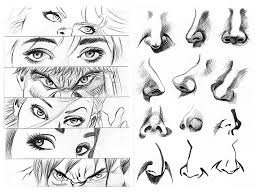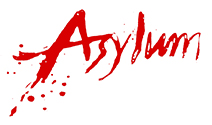Comics and mental health have always been linked for me. My early experiences of learning to enjoy my own solitude came with The Beano and Topper and a bag of sherbert pips. Later on, girls’ comics were a mixed experience because I enjoyed the stories but learnt some rather restrictive messages about femininity and the importance of finding one perfect best friend – or later boyfriend.

During my first adult experiences of depression, comics such as Leonard & Larry, Calvin & Hobbes, The Sandman series, and Strangers in Paradise became safe places to hide when the world was too much. They also opened up other possible ways of seeing things and relating with people in important ways for me.
In more recent years I have enjoyed many of the comics which tackle mental health more explicitly in the form of memoirs: graphic novels like Fun Home, Marbles, and Lighter than my Shadow, and web comics like Hyperbole and a Half. Like many people, I’ve noticed that it can be particularly powerful to see an experience of distress or suffering similar to my own depicted in comic form. It can lift the sense of isolation and enable me to get in touch with feelings that otherwise I struggle to find.
Empathy and compassion for the author or character can help me to find kindness for myself that is otherwise difficult. Something about the combination of pictures, words, and narrative seems to enable a connection that doesn’t always happen for me with written memoirs, films, or other media.
However, my impression is that most of the comic memoirs so far have taken a fairly individual approach to mental health, similar to that taken in wider culture. Generally, mental health difficulties are located in a person’s physiological make up and/or in their psychological development. There is not much of a sense of the ways in which social and cultural forces might be involved.
My own approach to mental health, as well as my personal experience of it, is very much a bio-psychosocial one. By this I mean that I think that biological, psychological and social aspects are interwoven in such complex ways that it is often impossible to tease apart the separate elements, or to answer questions about which caused which.
For myself, I imagine that there was some initial biological vulnerability, particularly to depression, given that this was present in both sides of my family. There was also a key role of the culture and class I was born into, and the messages I received about emotions, identity, and relationships due to that. This played out through a particular set of experiences whereby, like most kids, I learnt to monitor and criticise myself and to feel shame.
For me it was a lot about being a middle- (or mixed-) class kid in a working-class school, and being a person who didn’t fit the very strict gender binaries that were in place. Of course, all of these experiences influenced the way in which my body and brain developed, just as subsequent adult experiences of love and kindness, as well as conflict and pain, no doubt left their marks on my neural connections and chemistry, influencing the ways in which I approach the world, and making certain experiences more or less likely.
When I began creating comics – like many of the comic memoir authors who I have read – rather than fiction, it made sense to draw from my own life. With comics, I deliberately aimed just to draw whatever was most alive for me at the time, as a kind of escape from the more serious, academic, non-illustrated writing that I was doing. However, I found that what I often ended up drawing was about mental health related experiences and how, for me, they were embedded in social messages.
For example, one of my earliest comics, Everybody Else, saw me in my therapist role listening to the most common things I hear from virtually all clients: how they feel there must be something uniquely wrong with them when they compare themselves to everybody else who seems to be getting on just fine. In the comic, I tried to capture the impact of the culture we live in, which encourages us to constantly monitor ourselves, compare ourselves against (imagined) others, and find ourselves lacking and flawed. In the last frame I tried to show how impossible it is to step outside of culture, as I found myself thinking the same thing as all my clients.
A while later I wrote a short series of comics about a Buddhist retreat, which I subsequently used to illustrate my book on mindful therapy. In one comic, I reflected on my own painful experience of sitting in meditation and feeling wave upon wave of shameful memories and feelings. Again, the bio-psycho-social link is there. My physical pain is linked to the emotional experience which is, in turn, linked to social messages I have learnt (again relating to class, culture, sexuality and gender) about the importance of pleasing others, the embarrassment of bodily functions, and the necessity of fitting in, for example.
When Caroline, Joseph and I were preparing this special comics issue, and running the 9 Worlds Conference workshop which some of the contributors attended, one thing that was pointed out to me was that there are many comics which deal with mental health and social aspects of experience. It is just that we probably don’t think of them as ‘mental health’ comics. For example, comics such as Maus and Persepolis deal with the psychological impact of trauma on individuals and subsequent generations, as well as how people are influenced by discrimination, war, poverty and alienation. So perhaps all that is needed to find a fuller, more bio-psychosocial understanding of mental health in comics is to cast our net a little wider.
To read more articles like this, SUBSCRIBE to Asylum magazine.
